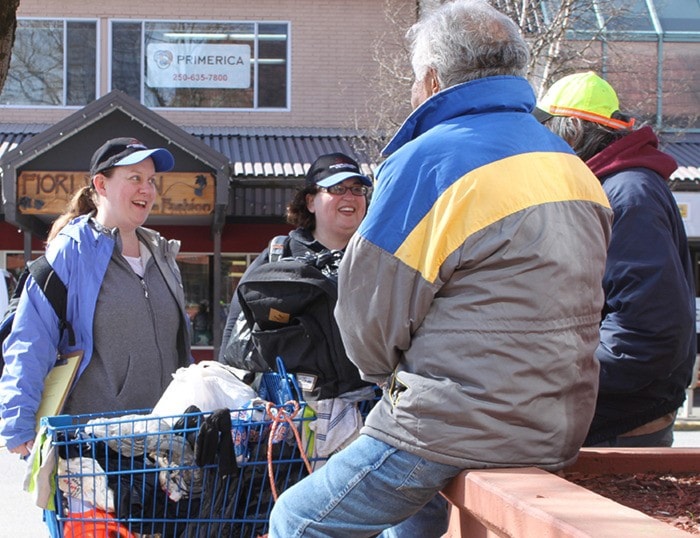The number of local people considered homeless as identified through a two-day survey conducted on the streets and in shelters last month is now 74, an increase over a preliminary count of more than 50.
Eight out of the total were perceived to be homeless, and did not fill out the survey.
The city-financed count carried out by the Terrace and District Community Services Society (TDCSS) April 22 and 23 is intended to guide efforts to provide housing.
Seven respondents said they couldn’t get into a homeless shelter because it was full and another five chose not to stay in a shelter because they don’t like to stay in them.
Ksan Society, the local housing not-for-profit runs two shelters—one for women and one for men. The breakdown of gender of the homeless who responded to the survey was 22 females and 44 males.
On the nights of April 21 and April 22, eight homeless people stayed outside or in a vehicle, 19 at someone else’s place, one at their parents, and 16 responded “other” which included flophouses and non-conventional outdoor shelter.
Of the total number of homeless, 22 responded that they stayed in the shelter one of those two nights of the survey. Seven said they were turned away from shelters because they were full, two listed other reasons for being turned away and three couldn’t find a shelter or didn’t know about the shelter, and 13 were able to stay with a friend.
Of those surveyed, 40 out of the 66 had stayed in the shelter in the previous 12 months and 20 had not.
Age-wise, the oldest person surveyed was 73-years-old and the youngest 20.
Three were in their 60s, eight were in their in 50s, eight in their 40s, eight in 30s and seven in their 20s.
The survey asked if those responding considered themselves to be aboriginal—44 responded yes to that and 15 said no.
In terms of where these homeless received their money, 14 said it was from welfare/income assistance, six disability benefit, and four from binning and bottle returns.
Two homeless people had full-time jobs, two had part-time or causal jobs, two were on the Canadian Pension Plan or other pensions, four had no income, and two responded “other.”
Those on disability and welfare said they supplemented their social assistance with bottle return and binning.
With regards to health, 22 respondents said they suffered from a medical condition, 14 had a disability, 13 had addiction issues and two mental illness.
According to TDCSS outreach worker Michael Watson, who is one of the administrators of the survey, the rise over past homeless numbers unofficially estimated several years ago at 15-18 is due to rising rental costs.
Watson said he recognized individuals on the streets who had been evicted because of renovations being done on buildings after which the rates were hiked by the landlords. These are called ‘renovictions’ and have been reported in several northern towns.
“In one apartment I know of, they were allowed to go back but they had to pay $1,200 instead of the $775 they were paying,” said Watson, adding that at least two of those people showed up in the homeless count.
He said the solution is either more affordable housing or hiking social assistance rates.
